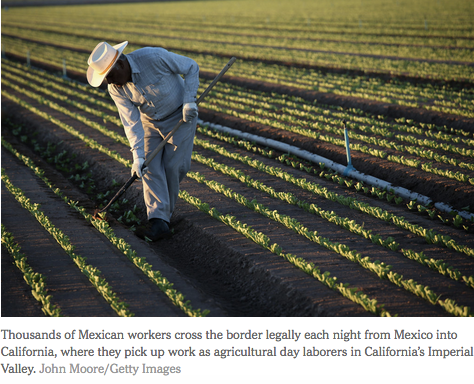Let’s just say it plainly: The United States needs more low-skilled immigrants.
You might consider, for starters, the enormous demand for low-skilled workers, which could well go unmet as the baby boom generation ages out of the labor force, eroding the labor supply. Eight of the 15 occupations expected to experience the fastest growth between 2014 and 2024 — personal care and home health aides, food preparation workers, janitors and the like — require no schooling at all.
“Ten years from now, there are going to be lots of older people with relatively few low-skilled workers to change their bedpans,” said David Card, a professor of economics at the University of California, Berkeley. “That is going to be a huge problem.”
. . .
But it is largely wrong. It misses many things: that less-skilled immigrants are also consumers of American-made goods and services; that their cheap labor raises economic output and also reduces prices. It misses the fact that their children tend to have substantially more skills. In fact, the children of immigrants contribute more to state fiscal coffers than do other native-born Americans, according to a report by the National Academies.
What is critical to understand, in light of the current political debate, is that contrary to conventional wisdom, less-skilled immigration does not just knock less-educated Americans out of their jobs. It often leads to the creation of new jobs — at better wages — for natives, too. Notably, it can help many Americans to move up the income ladder. And by stimulating investment and reallocating work, it increases productivity.




